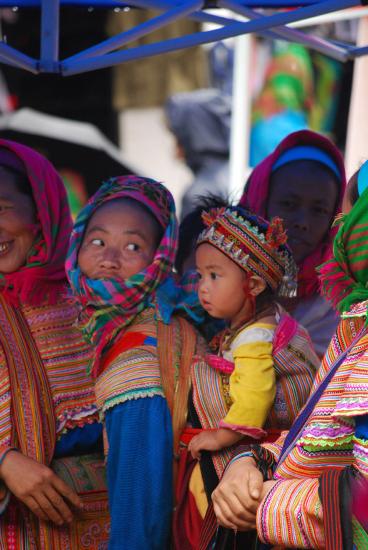
Hmong women have long decorated ceremonial clothing, baby carriers, and funeral accouterments with embroidery, appliqué, and batik, three textile practices collectively known among Hmong clans as paj ntaub (pronounced “pa ndau” and translated as “flower cloth”). While practices among various Hmong clans differed, they shared precise geometric forms, fine detailed stitching, and bold coloring. Traditionally, young girls learned paj ntaub techniques from watching their mothers, developing appliqué and embroidery skills along with abilities of manipulating symmetry, proportion, and color.